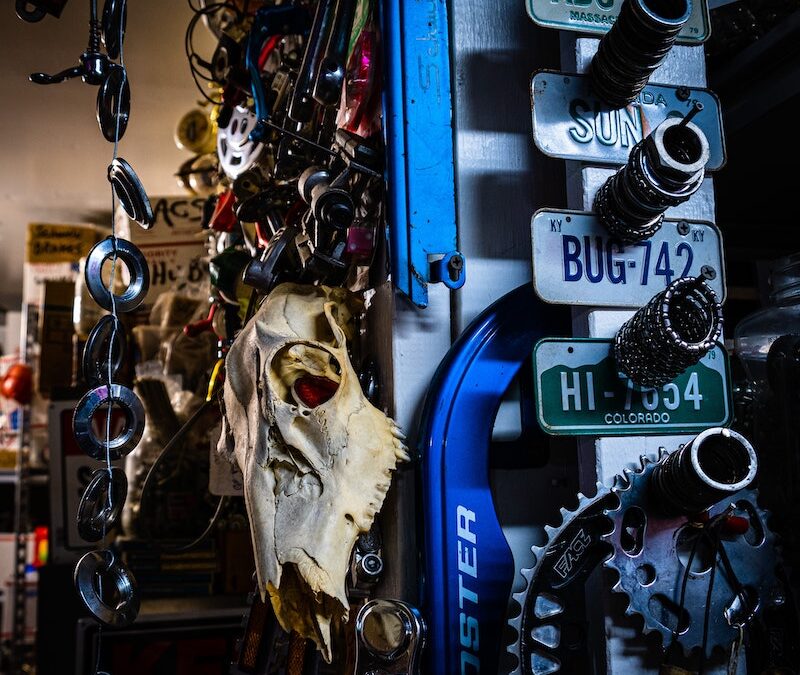Are you a hoarder and looking for ways to help manage your anxiety? Controlling the need to collect items and reducing stress can be challenging, but it’s possible with proper techniques. Hoarding is an uncontrollable desire to save things that are mostly useless or unusual. It’s an issue many people face worldwide and can be triggered by anything from anxiety, trauma, or even just collecting small items over time.
Hoarding can quickly spiral out of control when unchecked and can create a pile of clutter everywhere at home. It’s an issue that only gets worse over time, as the hoarder accumulates more and more items without taking steps to reduce their collection. As things get worse, everyday activities such as cleaning become difficult and uncomfortable for those with hoarding tendencies.
Whether grandiose collections have been established in your home or you’re taking initial steps into learning how to declutter better, these 11 tips we have put together will keep difficulties at bay while also giving you room to breathe

11 Decluttering Tips For Hoarders
Being Open and Honest about Your Hoarding Problem
This is the first step to successful decluttering. Acknowledge that you have a problem and start to voice it out, either by speaking to family or friends, or seeking professional help.
Start with small goals and work your way up to bigger ones
Isn’t it amazing how small victories can lead to monumental successes? When we start with small goals, we’re not only setting ourselves up for achievable results, but we’re also building a strong foundation for bigger accomplishments. Just think about it: when we accomplish something small, we naturally feel energized, motivated, and excited about what’s to come. In this way, we fuel our drive to keep pushing forward, creating a positive snowball effect that allows us to confidently tackle bigger and bolder challenges. So, just remember that sometimes starting small is the perfect way to jumpstart your journey to grand achievements.
Declutter Checklist
Decluttering a hoarder’s home can be daunting, but taking small steps can lead to a clutter-free home and better mental health. Here’s a checklist to get you started:
- Begin with one room or section to feel accomplished and motivated.
- Tackle living rooms first to create a relaxing environment.
- Set a timer for 15-30 minutes to keep from getting burnt out.
- Identify items you no longer need or use.
- Create a pile of items to keep.
- Do the same for any unwanted items you could donate, sell, or throw away.
- Consider designated storage for sentimental items.
- Involve family members to make the process enjoyable.
- Invest in storage solutions to keep your space organized.
- Seek professional help for hoarding disorder.
- Celebrate progress, no matter how small.
These are just some of the top decluttering tips to help you start decluttering and achieve a clean and organized home. Remember that the decluttering process is tedious, so take your time and be patient with yourself.
Working on the Underlying Issues
Hoarding is often a coping mechanism for underlying issues such as depression, anxiety, or trauma. It’s important to

Get Rid of Trash First
Start with the obvious. Go through your home and throw out anything that is trash like old food, newspapers, or other items that can’t be reused or repurposed. This will help you start to make a dent in the clutter and also provide some much-needed motivation to keep going.
Make a list of items you wish to keep, discard and donate
As you’re going through the process of decluttering your space, it’s essential to have a clear plan so you don’t feel overwhelmed. Now, imagine yourself holding three different containers labeled “keep,” “discard,” and “donate.” As you sift through your belongings, think about which items give you the most joy and have a functional purpose in your life; those belong in the “keep” pile. Next, consider the things that are broken, expired, or no longer useful – these are destined for the “discard” bin.
Finally, take some time to ruminate on the objects that are still in good condition but not bringing any value to your life. Instead of tossing these away, place them in the “donate” container, knowing that they’ll find a new home with someone who appreciates them. By adopting this simple system, you’ll transform your space into an organized and mindful haven, filled with items that truly matter to you.
Create a sorting system – like color coding – for the items you’re keeping

Have you ever thought about creating a sorting system, like color coding, for the items you’re keeping? Not only does it add a splash of vibrancy to your space, but it also makes locating things a breeze! Imagine opening your closet and instead of being overwhelmed by a pile of clothes, you’re greeted by beautifully coordinated hangers showcasing your wardrobe. Or how about walking into your home office and finding all your important documents neatly arranged in folders according to their relevance?
Trust me, incorporating a color-coded sorting system will not only enhance the visual appeal of your space but also improve your overall organization skills, saving you time and reducing stress. So, what are you waiting for? Grab some colored labels, dividers, or bins and start sorting your items – your future self will thank you!
Another one of the most popular methods for decluttering involves breaking your space into four boxes: keep, donate, sell, and toss. This allows for quick decision-making about which items should stay and which should go.
Set aside time once a week to go through your belongings
Imagine for a moment that it’s Monday evening, and you’re finally settling down after a long day. As you cozy up on the couch, you remind yourself that it’s that special time of the week. That’s right – time to go through your belongings! There’s something magical about dedicating just an hour or two once a week to sort through your possessions, rediscovering forgotten treasures, or realizing that maybe, just maybe, you don’t need to hold onto that collection of hotel shampoo bottles after all. When deciding what to keep and what to throw away, take less than 15 seconds to decide. It can help make it go faster and easier.
Plus, by consistently going through your things and decluttering, you’ll begin to cultivate a cleaner, more organized haven that you can be proud to call home. And the cherry on top? Stepping back at the end of the process, admiring your newly tidied space, and feeling the satisfaction of knowing that you did, indeed, make Marie Kondo proud.
Ask yourself questions about each item before deciding to keep it or throw it away
When it comes to decluttering and organizing our personal spaces, it’s important to ask ourselves some critical questions

Taking the time to engage with yourself in this way can work wonders in making our surroundings more spacious, bringing clarity when making decisions, and promoting a healthier and happier environment. The power of decluttering lies in saying goodbye to those objects that are no longer serving us. It can be a liberating experience and one that will certainly leave you feeling refreshed, rejuvenated, and ready for the next chapter in your life. So don’t be afraid to give those items the boot – believe me, you won’t regret it!
Use storage bins for items that are too important to get rid of but don’t have much use
Isn’t it funny how we all have those items that hold such sentimental value, but we can’t find any practical use for them? Well, I’ve found the perfect solution for those keepsakes we just can’t bear to part with – storage bins! By using these handy storage space containers, we can neatly organize and store anything from old photographs to childhood stuffed animals, while still keeping them safe from damage. It’s a great way to declutter our living spaces without losing precious memories. Plus, it’s easy to locate and reminisce on those tucked-away treasures whenever nostalgia strikes. So next time you come across something too important to toss but not quite useful enough to keep out, remember that storage bins are your best friends.
Declutter One Area at a Time
When it comes to decluttering your home, the most important thing you can do is to take it one area at a time. Trying to

Hire a Professional
If time, energy, or motivation are an issue for you, don’t be afraid to enlist the help of a professional. Home organizers and stylists have the expertise and know-how to whip your place into shape in no time. They can also offer valuable advice on ways to declutter and stay organized that you may not have thought of. So don’t be afraid to give them a call – it could make all the difference in transforming your living space from cluttered chaos to heavenly harmony!
Is Hoarding An Addiction?
Hoarding is a complex disorder that can be difficult to understand. While some people may view it as an addiction, it’s actually classified as a mental health disorder. People who struggle with hoarding disorder have persistent difficulty discarding or parting with possessions, regardless of their actual value. This can result in cluttered living spaces that can be dangerous or unsanitary. Hoarding disorder can be challenging to treat, and people who struggle with it may need the help of a mental health professional.
Benefits Of Decluttering Your Home
Decluttering your home can have a variety of benefits for your mental and physical health. First and foremost, it can help reduce stress and anxiety by creating a more organized and peaceful living space. It can also help you save time and money by making it easier to find things and reducing the need to buy duplicates. Additionally, decluttering can improve the air quality in your home by reducing the amount of dust and allergens that accumulate in cluttered spaces. Finally, decluttering sessions can help you let go of the past and move forward, especially when it comes to sentimental items that may be holding you back. Overall, decluttering your home can be a great way to improve your quality of life and create a more comfortable and enjoyable living space.
Take action towards a clutter-free life today!
Hoarding is a serious problem that can take over your life, but it doesn’t have to. By breaking the process of cleaning up and organizing your home into small manageable tasks, you can slowly start to build good habits. Start by setting achievable goals, making a list of things to keep, discard, and donate, creating a sorting system for items you want to keep, dedicating time each week to organize everything, asking yourself questions about each item before deciding what to do with it and using storage bins wisely. Taking these steps will help you declutter your space and give you back control of your life. It’s possible to tackle hoarding; it may take some time but if you stay focused and consistent good habits will become second nature. Small changes make a difference – work on one task or area at a time – it’s doable!


Recent Comments